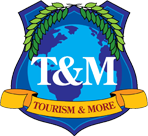Shopping Centers, Safety and Security
October 2007
The rise of shopping centers around the world means that these new shopping pilgrimage points are both tremendous tourism opportunities and risks. Shopping centers tend to fall into two categories, the indoor or galleria model and what is often called a strip mall, where the stores are often located around a parking lot and have no indoor corridors. In both cases, shopping at malls has become big business and it is interesting to note that one of the major reasons for a mall’s demise is issues of security. While many people falsely believe that shopping malls are safe heavens far away from urban problems, this is not the reality. Around the world malls have suffered not only from issue of shoplifting and pilferage, but from robberies, gang violence and even acts of terrorism. One of Tourism & More security experts, Terry Revella, has recently developed a handout on shopping center security. Much of the information that this edition of Tourism Tidbits presents comes from Terry’s work. Here are a number of points to consider regarding mall security. Many of these points are also valid for any public access security point and/or tourism attraction.
- Tourism offices (CVBs and national tourism offices) cannot depend on police departments or mall security to protect one of their most important tourism assets. Instead develop a mall tourism contingency committee. Having a police officer’s telephone number is not a contingency plan. Instead mall executives, tourism leaders and local law enforcement need to work together and develop joint taskforces before an incident occurs. The consequences of a security crisis at a mall impact not only that city’s tax revenues, but also its reputation, its hotel occupancy, its restaurants and of course in the case of death, people’s lives. It is a mistake to overlook the fact that in an age of terrorism, shopping malls are soft targets that symbolize excessive opulence and high levels of capitalism.
- Malls are high priorities. Many tourism officials and government officials simply do not believe that anything can happen at a mall until after it has happened. Shopping is the number one “tourism sport” and what happens at a mall impacts the economy and reputation of an entire community. The loss of a mall due to a terrorism incident would create economic shocks throughout communities. To add to this general state of general lethargy, many mall operators mistakenly believe that visitors and shoppers will be put off by good security. Quite the opposite is true. Shoppers cease coming to malls not due to their being protected but due to their lack of security precautions.
- For covered (indoor) type malls know that their entrances are often one of their weakest security points. Consider finding ways to use CEPTED/TEPTED (crime/terrorism prevention through environmental design) methods to present an appealing façade that is also safe and secure. Outdoor malls (along with indoor malls) should also consider where plants are placed, how safe restroom entrances are, and how quickly parking lots can be evacuated.
- Make sure that mall personnel are trained in what to do in case of a crisis. In a recent study by ASIS (American Society of Industrial Security) well over half of mall security managers reported inadequate training especially in regards to issues of terrorism protection. To make this situation worse, most malls have high employee turnover rates and the great majority of people working at malls have had either none or minimal security training.
- Know the major threats to your mall. In the ASIS study security directors reported that their number one problem was loitering, followed by fear of a terrorism attack, then shoplifting, robberies and burglaries and vandalism. It is important to realize that often there is a difference between perceived threats and actual threats and which threats are most likely to occur may also depend on local political or economic conditions. It is important to dialogue with local mall officials and know which threats they see as most dangerous to their mall how the tourism industry can be of help to them.
- Develop a mall risk assessment. No matter if you are protecting a covered (indoor) mall or a strip mall (outdoor mall) it is essential to know the major risks and hazards to your malls. How well can your mall’s employees communicate with either mall security or with the police? How often do the police work with mall security? Do the police have any knowledge of who is working at the mall or what the malls’ evacuation procedures may be? Is there a coordinated plan between the local police department, the mall security personnel and any security that a large anchor store may be providing?
- Consider adapting some of the principles behind Israeli mall security. Israel offers the world’s safest malls, not only from issues of terrorism but also when it comes to low mall crime rates, lack of loitering and customer satisfaction. The Israeli model can be adapted (in whole or in part) to malls around the world. Some of the ways that Israeli mall security differs from mall security in many Western nations includes:
- High levels of redundancies. Israeli mall security uses both active and reactive methods to protect the property, the businesses and the mall’s shoppers. Perimeter screening is a norm at Israeli malls,
- The use of unarmed guards supported and monitored by armed police officers,
- The use of random vehicle checks and entrance checkpoints,
- Face to face interaction between security personnel and mall employees and visitors,
- Regular (required by law) periodic risk assessments,
- Regular mall security drills (similar to fire drills),
- Businesses are required to submit emergency response plans in order to obtain business license,
- Regular police checks of security, risk management and evacuation plans.



